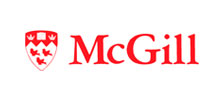Killam Seminar Series: Tales from the human brain: a multi-scale approach to elucidate pathogenic mechanisms involved in Parkinson’s

To attend in person, register
To watch virtually, click
Wilma D.J. van de Berg
Associate Professor, Clinical Neuroanatomy and Biobanking, Amsterdam UMC, The Netherlands
Host: Abbas Sadikot
Abstract:��To design effective disease-modifying treatments for Parkinson’s disease (PD), a deeper understanding of the (sub)cellular disease mechanisms and selective vulnerability to proteinopathy is urgently needed. Alpha-synuclein (aSyn) pathology is the neuropathological hallmark of PD and Dementia with Lewy bodies (DLB), but also frequently observed in AD and other neurodegenerative disorders at autopsy. Within Clinical Neuroanatomy, we aim to define cellular disease mechanisms and translate this knowledge into pathology-specific MRI, tissue and biofluid biomarkers for PD. We have developed a pipeline to study the aging and diseased postmortem human brain at macro-to-nanoscale resolution1.
We recently showed that increased cortical neurofilament (NfL) levels and synaptic loss contributes to cortical thinning in PD and correlates with increased cortical mean diffusivity in PD2. NfL-positive neurons showed degenerative morphological features and axonal fragmentation. The increased NfL correlated with pSer129-αSyn but more strongly with p-tau load in PDD. Using STED microscopy, we discovered that pSer129 aSyn and truncated aSyn differ in subcellular localization and that pSer129 aSyn displays a cytoplasmic network in early maturation stages of Lewy bodies in PD3. We demonstrated that aSyn aggregates in the soma and neurites of PD brains consists of accumulated membranes, cellular vesicles and organelles in which fibrils could not always be detected4. In MSA brains, we localized glial cytoplasmic inclusions (GCIs) and showed that they are composed of a meshwork of fuzzy filaments, lysosomes, autophagosomes. Using proteomic analysis, we observed distinct and overlapping molecular changes in between sporadic PD/DLB and GBA-carriers vs controls. Core mitochondrial proteins were more upregulated in the substantia nigra of sporadic PD/DLB compared to GBA-PD/DLB and controls, which was confirmed by mitochondrial morphological analysis by STED microscopy. Conversely, lysosomal proteins were more severely downregulated in GBA-PD/DLB versus sporadic including both GCase interacting proteins such as prosaposin and LIMP-2, and other luminal enzymes such as cathepsin B and cathepsin D ((unpublished data). Together, our high-resolution multicolor microscopy and molecular observations in the postmortem human brain provide novel insights into potential cellular disease mechanisms underlying a regulated Lewy body morphogenesis and network dysregulation in PD.
Bio: Wilma D.J. van de Berg is Associate Professor, group leader, at the dept. of Anatomy & Neurosciences of the Amsterdam UMC, Vrije University Amsterdam, Director of the Normal Aging Brain Collection Amsterdam and President of the Dutch Parkinson Scientists association, Netherlands. She received her PhD in Cellular Neuroscience and at University of Maastricht in 2003. Afterwards, she specialized in neuroanatomy and neuropathology of Parkinson’s disease and related neurodegenerative disorders at VU University Medical Center, Amsterdam. Her research team Clinical Neuranatomy and Biobanking (CNAB) studies human brain morphology and protein aggregation in post-mortem human brain tissue of donors with Parkinson’s disease and related disorders from macro-to-nanoscale using advanced imaging methods. She co-leads the multicentre observational longitudinal cohort study ‘Profiling Parkinson’s (ProPark)’ aiming to identify molecular profiles for stratifying Parkinson patients for next clinical trials.
Supported by the generosity of the Killam Trusts, the MNI's Killam Seminar Series invites outstanding guest speakers whose research is of interest to the scientific community at the MNI and ƽ���岻��.




